Idea by
José Luis Chacón (director), Susana Suniaga, Pilar Hočevar
TiA
Call for ideas 2021
Casita de deseos
Casita de deseos
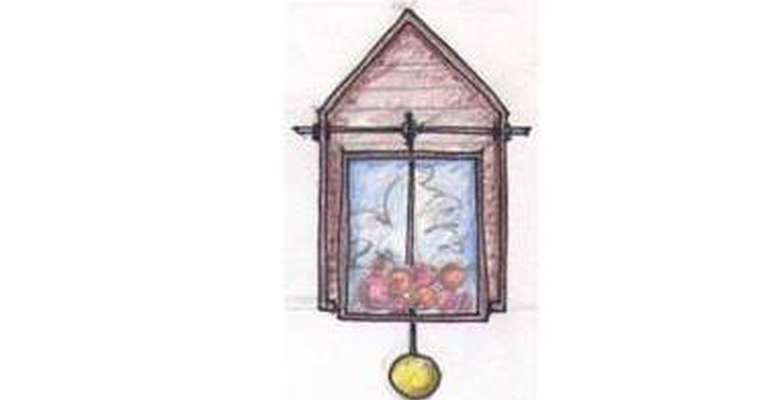
- Site-specific cases
A wish is an intervention in our inner space. It shows a desire for something that is missing. When it comes out, it becomes a visible sign (a letter, a candle, a coin), but with an encrypted meaning. These signs are interventions as well, but in the public space (as it happens in many public fountains or in churches).
Casita de deseos is a public art install-action aimed at collecting the wishes of the spectators (people gathered in a public space), in which it itself becomes an intervention (of a heritage building) located in front of that public space; thus, a tiny house, full of wishes, by another larger house.
In consequence, this project involves the private, personal world of individuals, safely expressed in a public urban domain. The most intimate thoughts come out to become a collective heritage
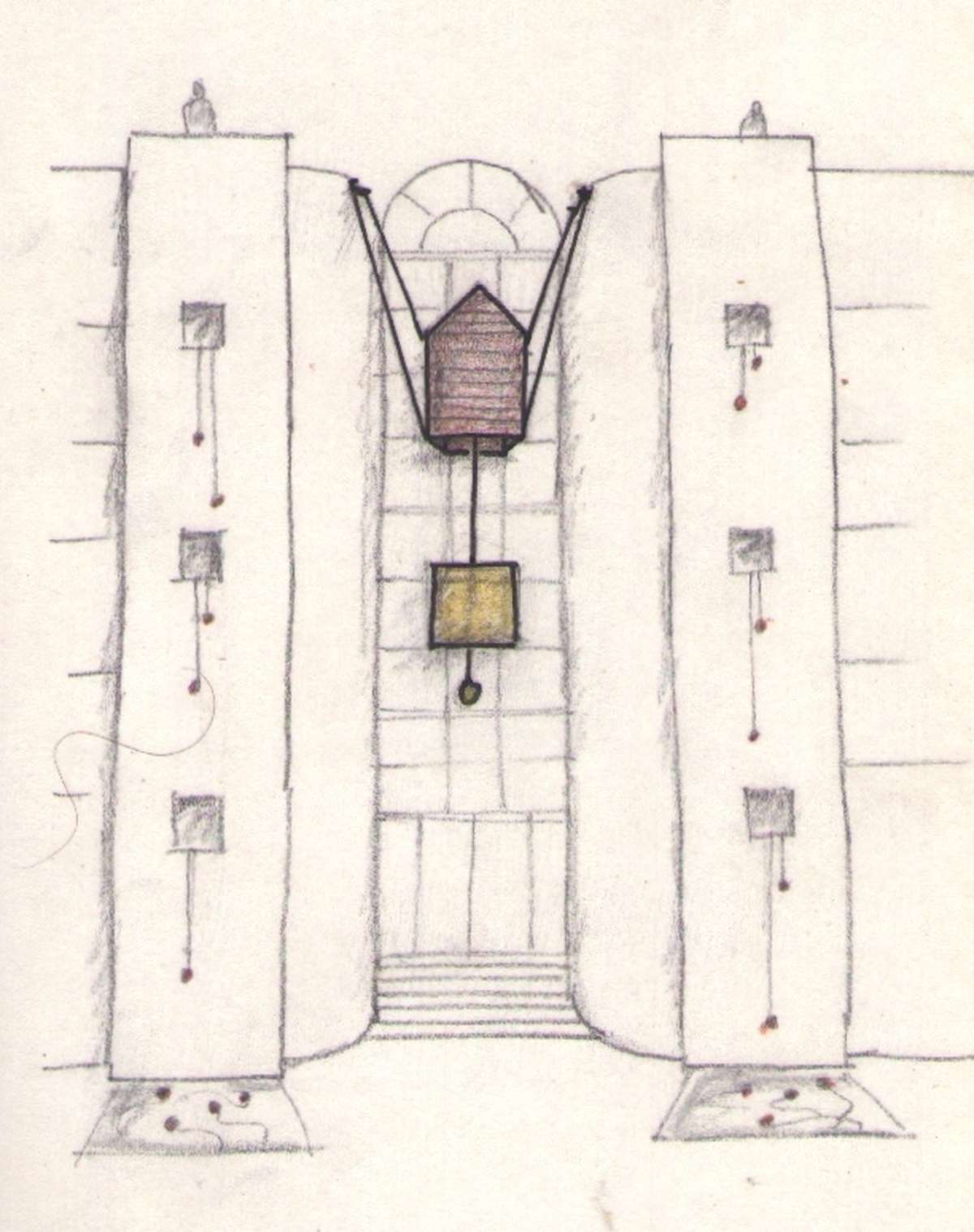
1. General view of the install-action. The installation part hangs from the façade, and the action takes place around and inside the heritage building; the main characters: a performer (the guide), the public (the wishers), and the plastic balls (the wishes). The chosen building should be located in front of a square and must have public access
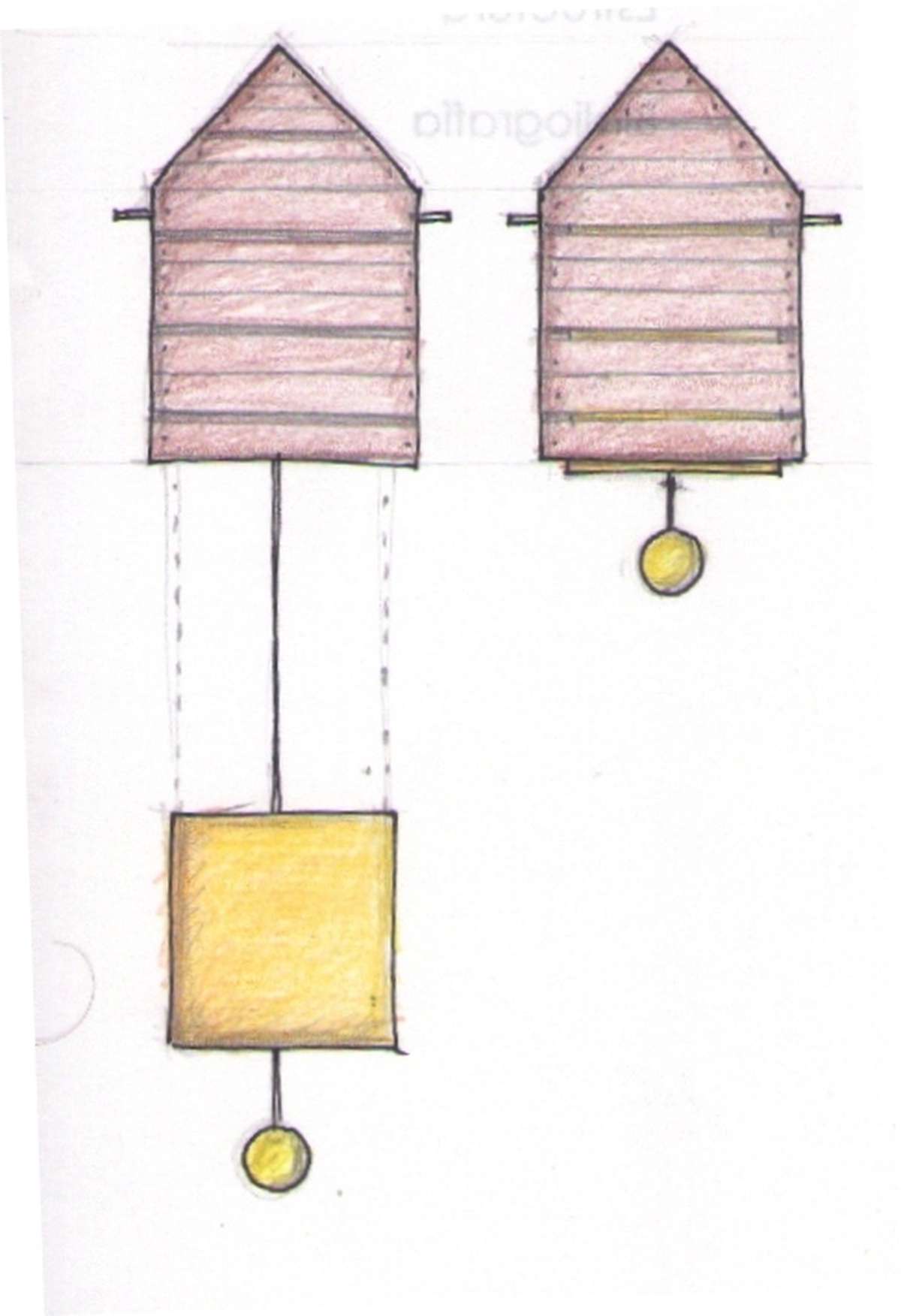
2. Exterior view of the installation. The tiny house is made of wooden slabs and it is closed from the outside. There is a yellow wooden cube that goes up and down through a mechanism, fitting into the tiny house. It is installed outside on the building’s façade, connected to a window (or curtain wall), and hung by cables from the cornice
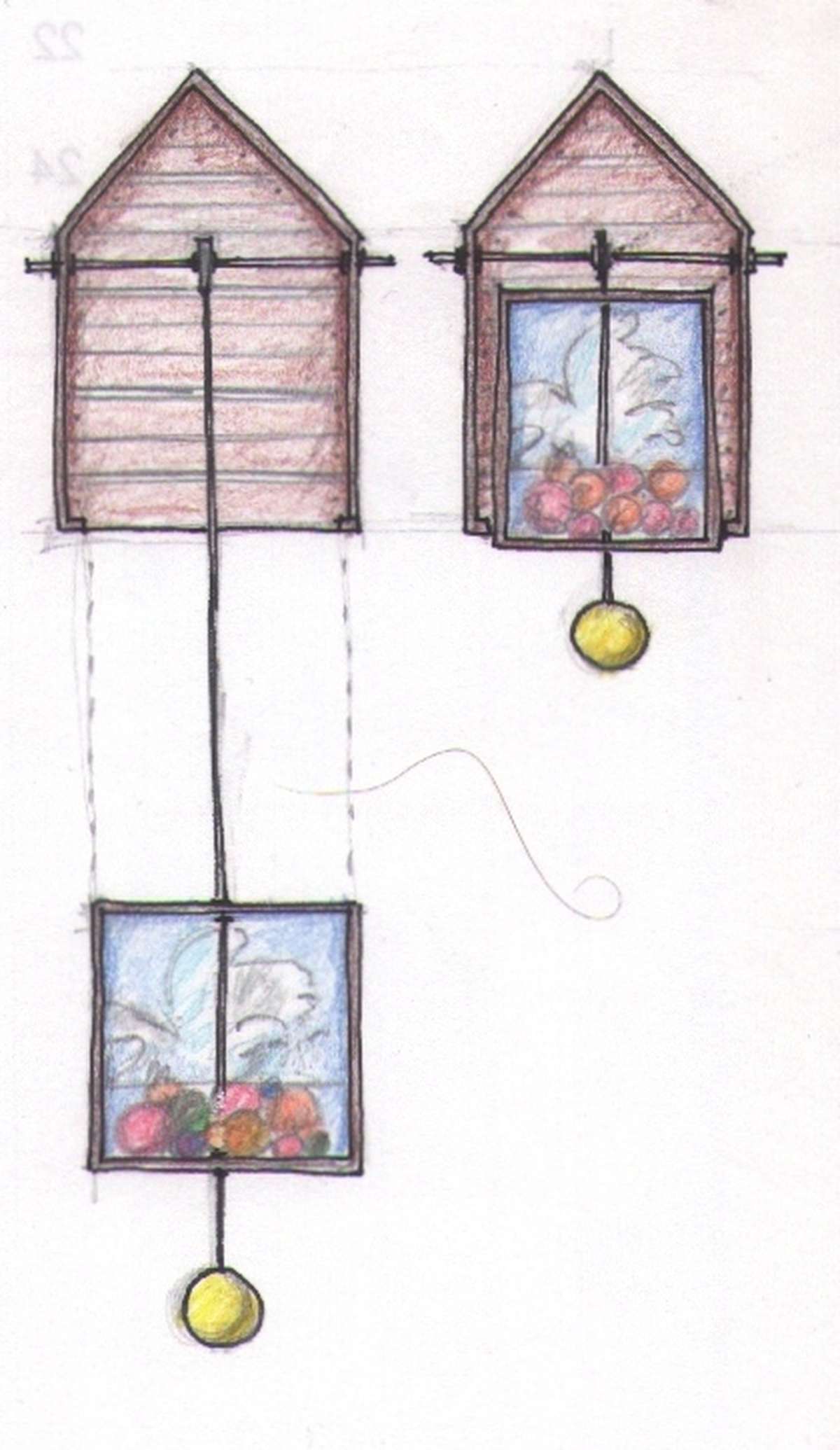
3. Interior view of the installation. The inside is completely open and it is accessible from the window (or curtain wall). The yellow cube’s interior has its surfaces painted by Susana Suniaga (a story of wishes), and it is to be filled with the plastic balls (the wishes). Once it is filled, the cube descends by gravity to the lower floor
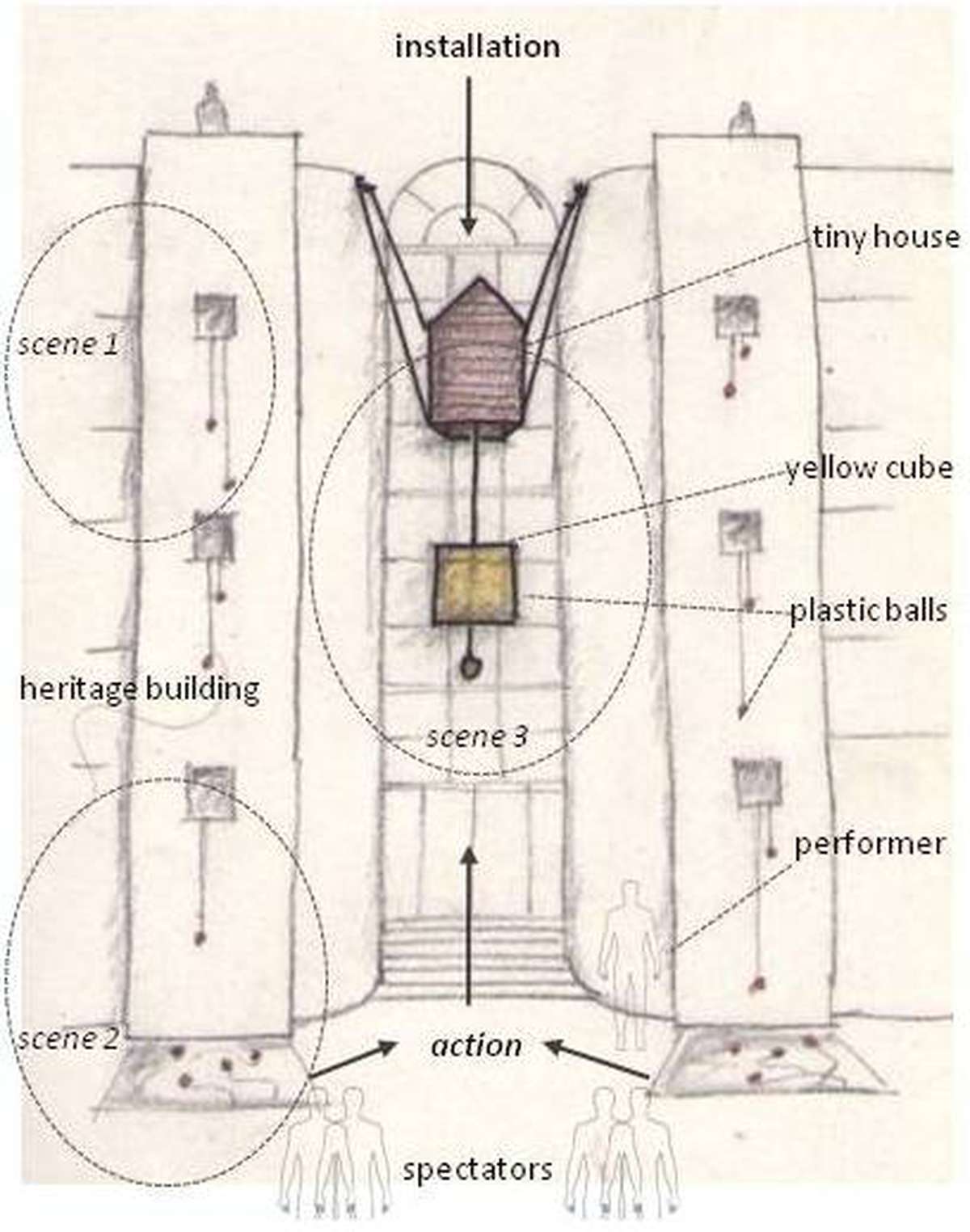
4. Script of the action. Scene 1: collaborators throw outside the windows the plastic balls, while Pilar Hočevar begins a performance (lead of wishes) in front, and the public gathers in the square. Scene 2: led by Pilar, each spectator picks up a ball and makes a wish; then, they go inside the building and reach the tiny house where they deposit the balls. Scene 3: Once the cube is filled with the balls, Pilar leads them down and outside; and the whole performance re-starts once again
Casita de deseos
Casita de deseos

- Site-specific cases
A wish is an intervention in our inner space. It shows a desire for something that is missing. When it comes out, it becomes a visible sign (a letter, a candle, a coin), but with an encrypted meaning. These signs are interventions as well, but in the public space (as it happens in many public fountains or in churches).
Casita de deseos is a public art install-action aimed at collecting the wishes of the spectators (people gathered in a public space), in which it itself becomes an intervention (of a heritage building) located in front of that public space; thus, a tiny house, full of wishes, by another larger house.
In consequence, this project involves the private, personal world of individuals, safely expressed in a public urban domain. The most intimate thoughts come out to become a collective heritage
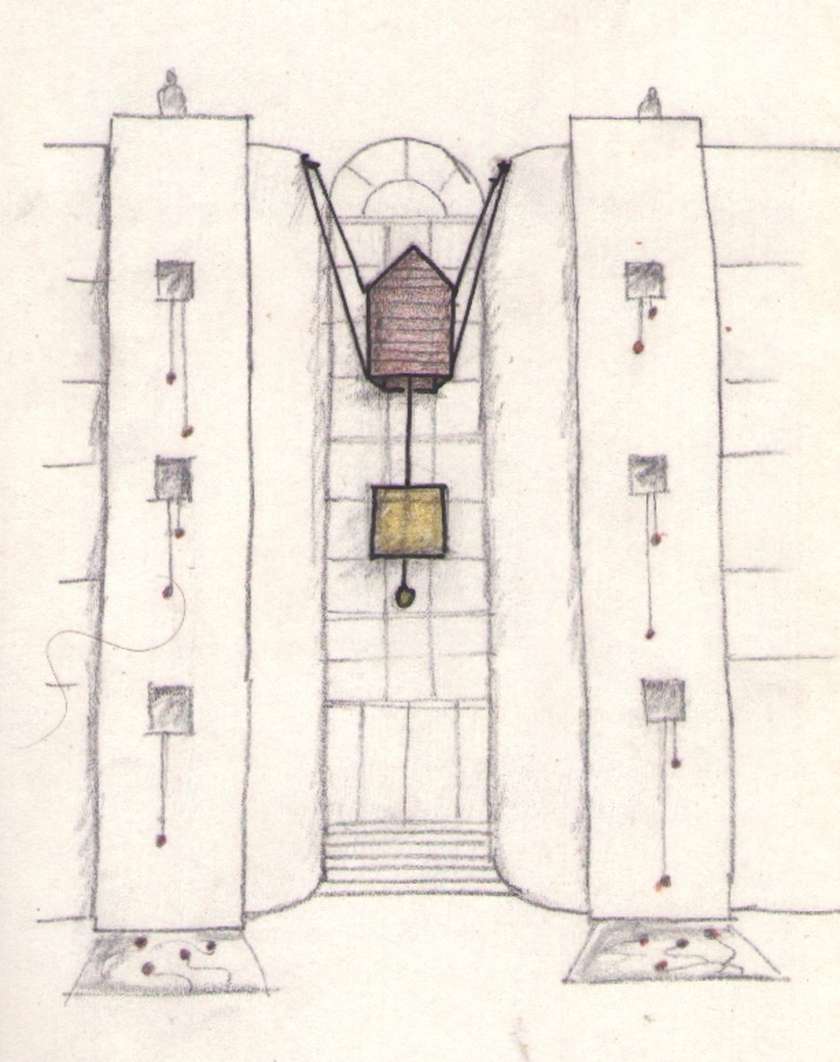
1. General view of the install-action. The installation part hangs from the façade, and the action takes place around and inside the heritage building; the main characters: a performer (the guide), the public (the wishers), and the plastic balls (the wishes). The chosen building should be located in front of a square and must have public access
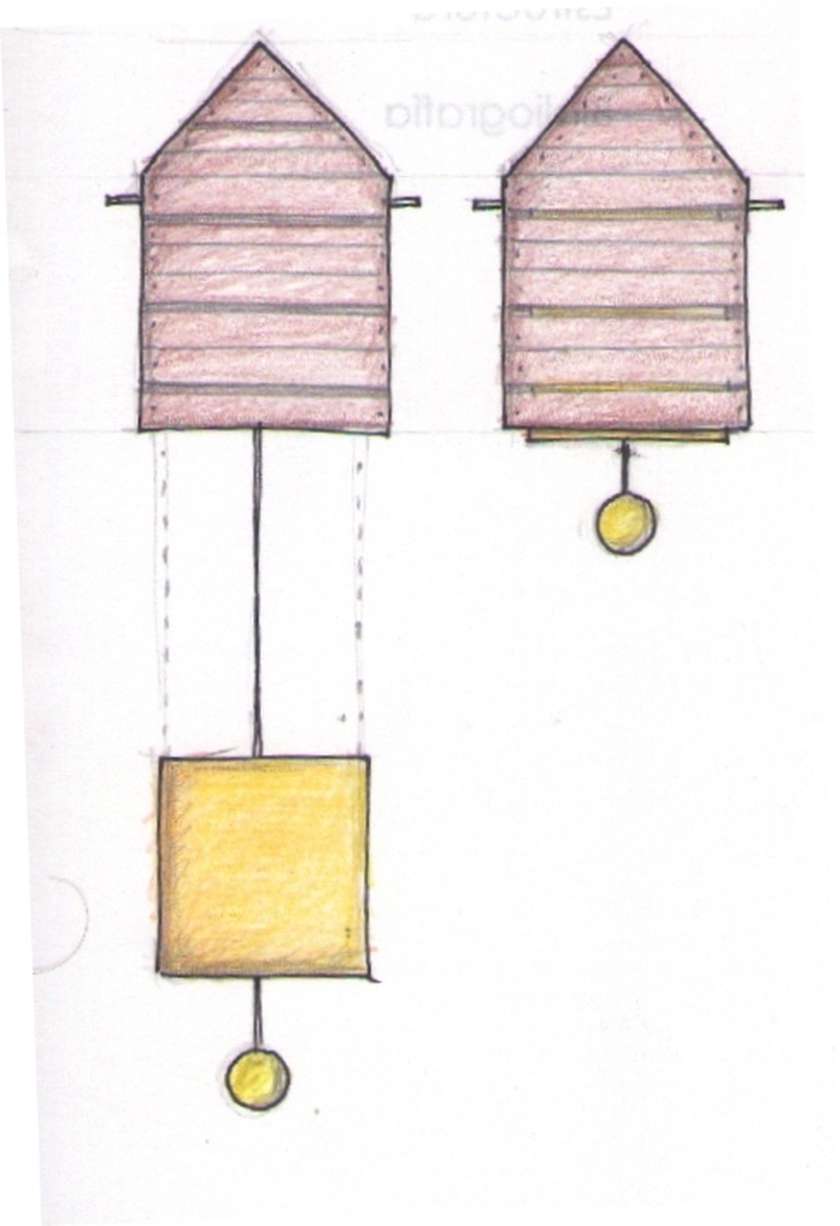
2. Exterior view of the installation. The tiny house is made of wooden slabs and it is closed from the outside. There is a yellow wooden cube that goes up and down through a mechanism, fitting into the tiny house. It is installed outside on the building’s façade, connected to a window (or curtain wall), and hung by cables from the cornice
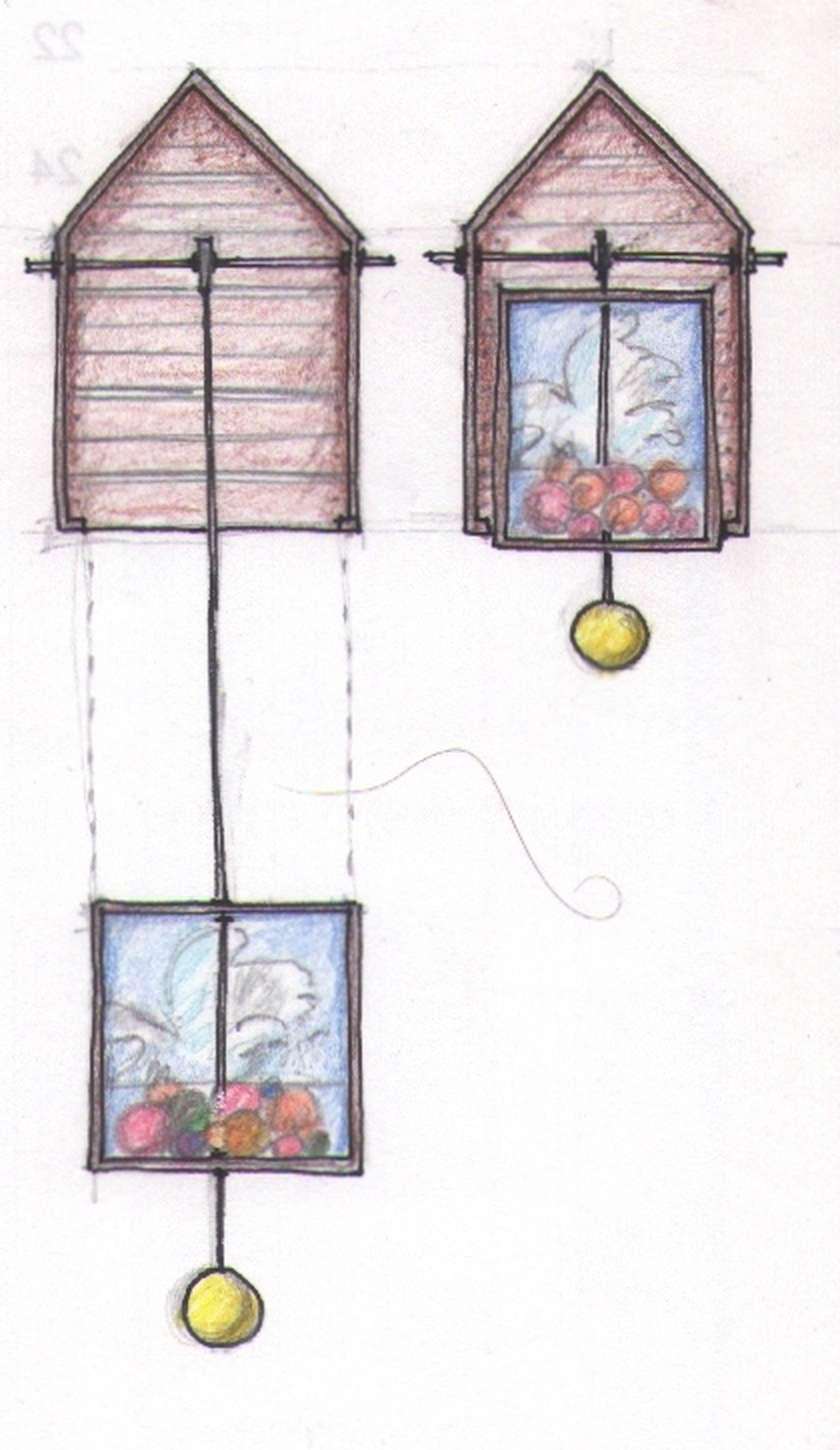
3. Interior view of the installation. The inside is completely open and it is accessible from the window (or curtain wall). The yellow cube’s interior has its surfaces painted by Susana Suniaga (a story of wishes), and it is to be filled with the plastic balls (the wishes). Once it is filled, the cube descends by gravity to the lower floor
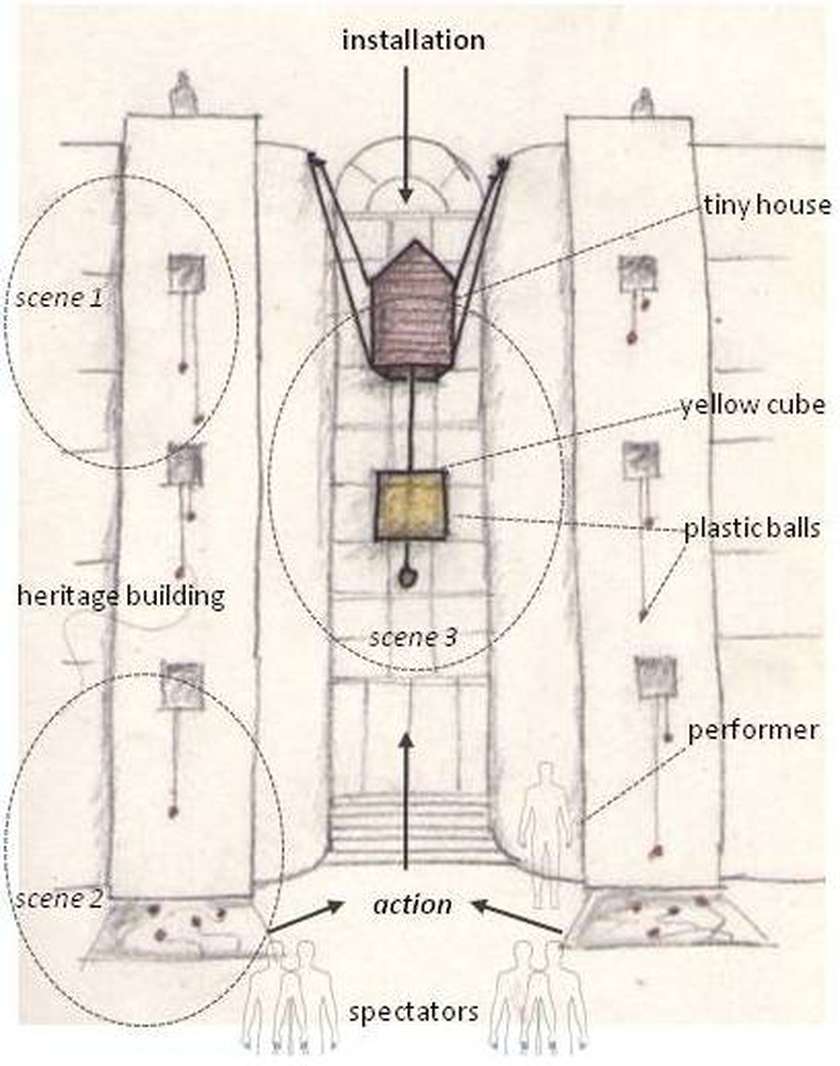
4. Script of the action. Scene 1: collaborators throw outside the windows the plastic balls, while Pilar Hočevar begins a performance (lead of wishes) in front, and the public gathers in the square. Scene 2: led by Pilar, each spectator picks up a ball and makes a wish; then, they go inside the building and reach the tiny house where they deposit the balls. Scene 3: Once the cube is filled with the balls, Pilar leads them down and outside; and the whole performance re-starts once again